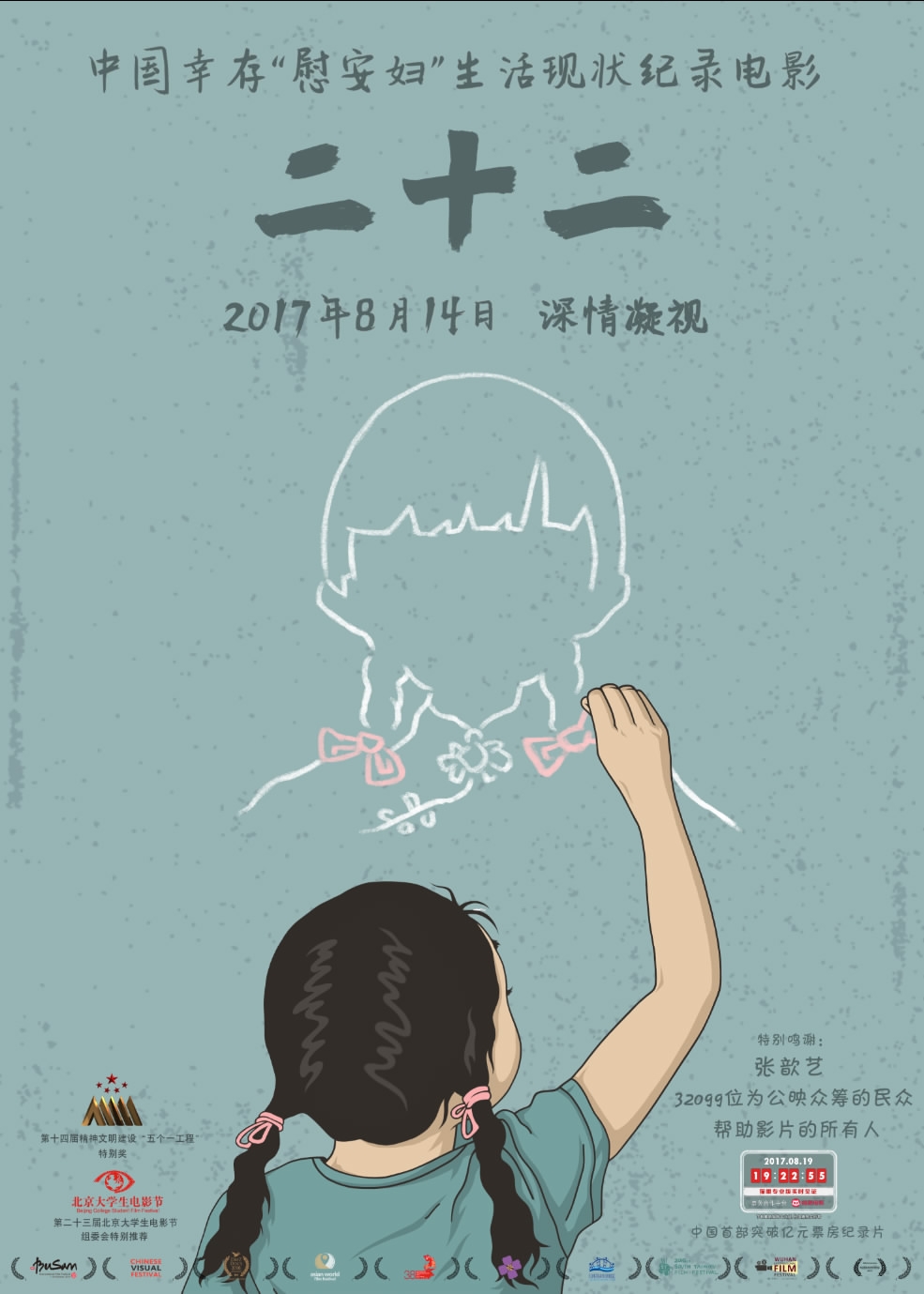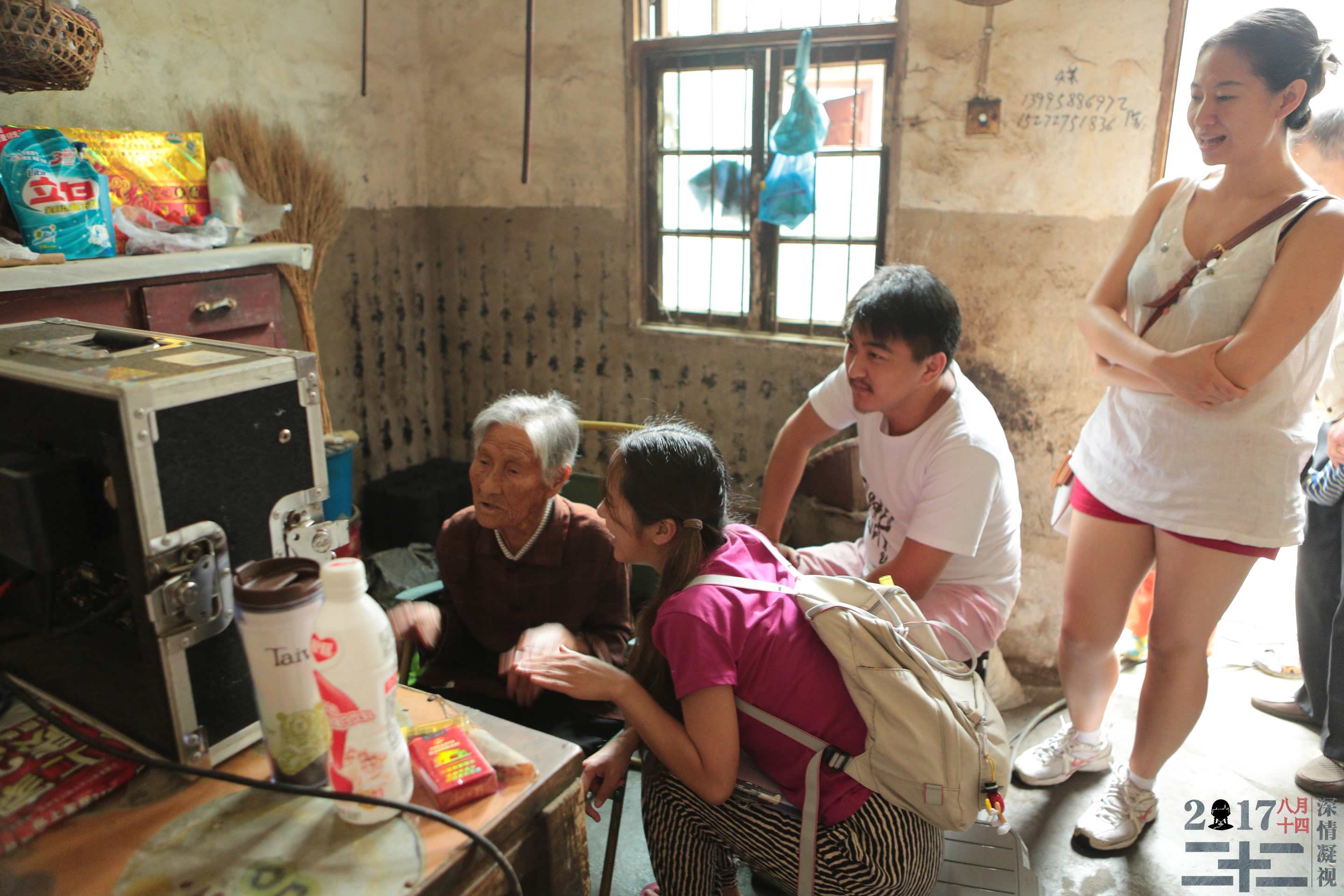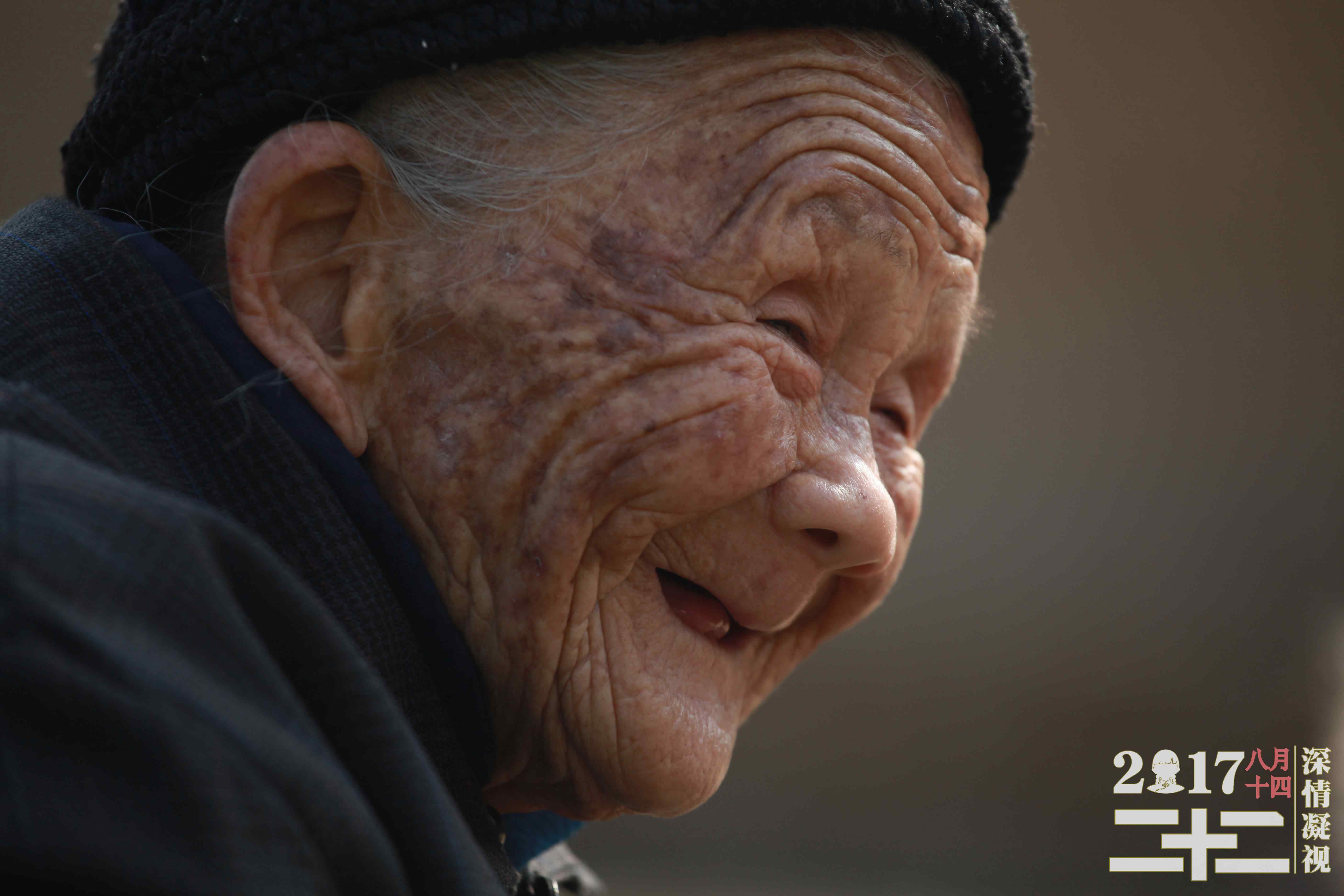
Culture
20:34, 12-Dec-2017
Twenty Two: Documenting the lives of 'comfort women' before it’s too late
By Li Jingjing

From 220,000 to just 22, few former Chinese “comfort women” are still alive to tell their stories of being forced into sex slavery by Japanese army during World War II.
The women, just young girls back then, suffered inhumane treatment. Some were tortured to death, some were lucky to get back to their normal lives. All were subjected to horrific sexual assault. Decades passed, and most of the victims left the world without receiving an apology from the Japanese government.
Estimates put the number of the victims across Asia at over 300,000, with women from countries like Japan, Korea (before division), Vietnam and China.
In 2014, there were only 22 survivors alive in China. Film director Guo Ke decided to document their lives before it was too late. The name of his documentary? "Twenty Two."

Poster of the documentary "Twenty Two". /Photo courtesy of Guo Ke
Poster of the documentary "Twenty Two". /Photo courtesy of Guo Ke
The power hidden in calmness
One grandma chats with her daughter, another enjoys the scenery in the yard of her nursing home. It’s hard at first to believe "Twenty Two" is a documentary about such a weighty topic as the horrors suffered by the Chinese "comfort women." There is no drama or anger; it’s more like the story of several grandmas’ later lives.
The documentary, the first movie about "comfort women" to be screened in China’s cinemas, instantly became a trending topic when it was released in August.
"Very calm and restrained" is how most viewers responded.
"We felt the kindness and calmness from the women, so we just told what they felt," Guo explained during a one-on-one interview with CGTN Digital.
"They are very kind and peaceful, as we showed in Twenty Two. The film is a reflection of their hearts. We didn’t do much artistic creation or post production."

Director Guo Ke talks to CGTN Digital. /CGTN Photo
Director Guo Ke talks to CGTN Digital. /CGTN Photo
Most of them moved on and are living a calm life, almost as if the horrifying experiences never happened on them.
Guo and his crew traveled around five provinces for months to spend time getting to know those surviving women and their stories.
The compassion and total trust these grandmas gave to the strangers surprised Guo, and the strength of their will astounded him.
When looking at photos of the Japanese abusers, victim Wang Yukai said "those Japanese got old too, and they lost their beards." Wei Shaolan even laughed when she spoke about running away from the stronghold, the place that Japanese soldiers kept all "comfort women."
But they do shed tears too.
Mao Yinmei cried as she recalled how she was separated from her mother. Lin Ailan cried as she told how she watched as the Japanese tied up and then drowned her mother in the river. Li Ailian, who escaped home from the stronghold, cried as she remembered how her husband told her not to worry and that they would carry on life together as before. It wasn’t her fault, he gently told her, the Japanese took her against her will.

A scene of "Twenty Two". /Photo courtesy of Guo Ke
A scene of "Twenty Two". /Photo courtesy of Guo Ke
"In Twenty Two, the four main interviewees shed tears only when they talked about their families," Guo, clearly moved by his experiences with the women, said.
When the documentary was released in August 2017, there were only eight living Chinese victims.
The Motivation
Guo first brought the plight of "comfort women" to the screen in 2012, when he directed the documentary "Thirty Two." There were still 32 living victims at the time.
In "Thirty Two," he depicts the life of Wei Shaolan, and her son Luo Shanxue. They lived in a village in Guangxi Zhuang Autonomous Region in south China.
Wei found herself pregnant after running away from the Japanese stronghold and decided to give birth to the child. But her son’s life was not easy. Being of Chinese-Japanese blood, he was discriminated against by everyone in the village. No woman wanted to marry him and he remained single even at the age of 70.
Guo was inspired by his experiences making "Thirty Two," and continued his journey of documenting the lives of "comfort women."

Guo Ke and his crew visiting victim Mao Yinmei. /Photo courtesy of Guo Ke
Guo Ke and his crew visiting victim Mao Yinmei. /Photo courtesy of Guo Ke
With a required budget of four million yuan (610,000 US dollars), "Twenty Two" faced a tough challenge to be released. However, after receiving donations from 30,000 ordinary Chinese through crowdfunding, the film successfully made it to cinemas. And Guo put every donor's name on the closing credits.
"I saw a desire for life from Wei Shaolan," he explained. "I saw a positive attitude towards life."
"She said 'the world is wonderful, I need to survive to see it, even if it means I barely have food.' Later in life, even after going through such suffering, she is still full of hope. I think there is so much in her that could inspire young people like us. There is so much about the 22 elderly people that really is worth learning from. Not just the bitter history."

Victim Wei Shaolan./Photo courtesy of Guo
Victim Wei Shaolan./Photo courtesy of Guo
Article edited by: John Goodrich
Video edited by: Mi Xue
Cameraman: Wang Yiwei

SITEMAP
Copyright © 2018 CGTN. Beijing ICP prepared NO.16065310-3
Copyright © 2018 CGTN. Beijing ICP prepared NO.16065310-3